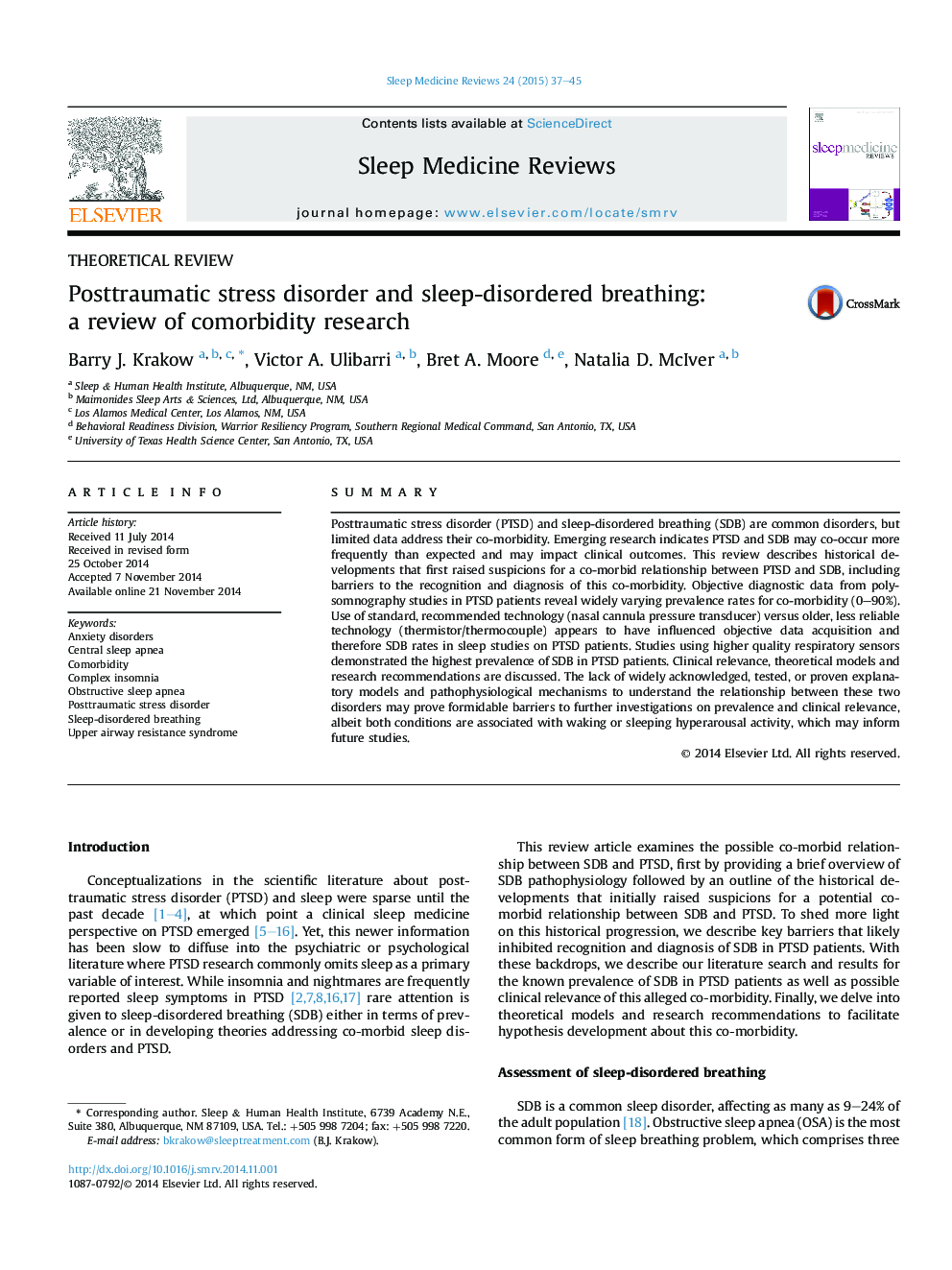| Article ID | Journal | Published Year | Pages | File Type |
|---|---|---|---|---|
| 6042819 | Sleep Medicine Reviews | 2015 | 9 Pages |
Abstract
Posttraumatic stress disorder (PTSD) and sleep-disordered breathing (SDB) are common disorders, but limited data address their co-morbidity. Emerging research indicates PTSD and SDB may co-occur more frequently than expected and may impact clinical outcomes. This review describes historical developments that first raised suspicions for a co-morbid relationship between PTSD and SDB, including barriers to the recognition and diagnosis of this co-morbidity. Objective diagnostic data from polysomnography studies in PTSD patients reveal widely varying prevalence rates for co-morbidity (0-90%). Use of standard, recommended technology (nasal cannula pressure transducer) versus older, less reliable technology (thermistor/thermocouple) appears to have influenced objective data acquisition and therefore SDB rates in sleep studies on PTSD patients. Studies using higher quality respiratory sensors demonstrated the highest prevalence of SDB in PTSD patients. Clinical relevance, theoretical models and research recommendations are discussed. The lack of widely acknowledged, tested, or proven explanatory models and pathophysiological mechanisms to understand the relationship between these two disorders may prove formidable barriers to further investigations on prevalence and clinical relevance, albeit both conditions are associated with waking or sleeping hyperarousal activity, which may inform future studies.
Keywords
Related Topics
Life Sciences
Neuroscience
Neurology
Authors
Barry J. Krakow, Victor A. Ulibarri, Bret A. Moore, Natalia D. McIver,
